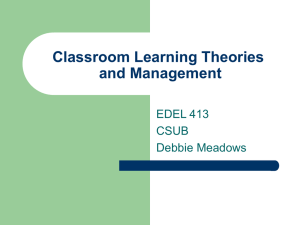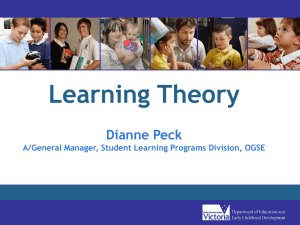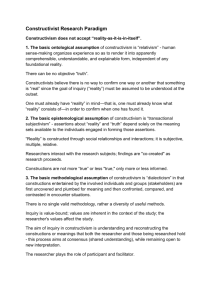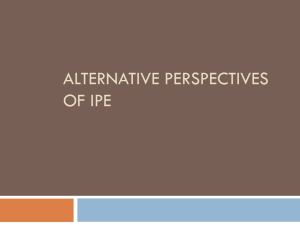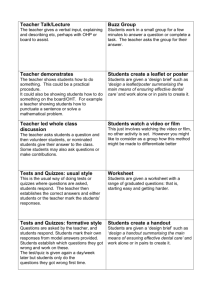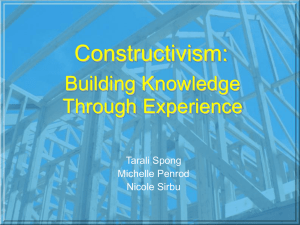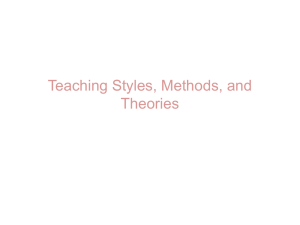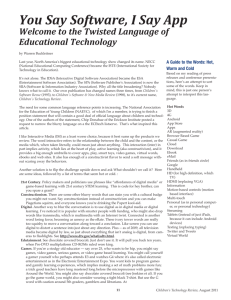Cognitive explanations of learning and approaches
advertisement
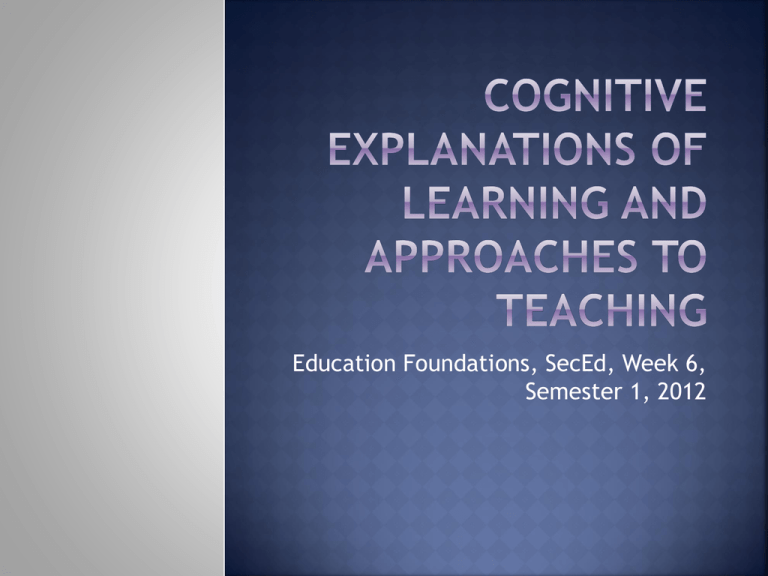
Education Foundations, SecEd, Week 6, Semester 1, 2012 Cognitive views of learning • What is learning? • Cognitivist vs. behaviourist view • Three models Information processing model Constructivism • Individual / psychological constructivism • Social constructivism Learning involves “the acquisition or reorganization of the cognitive structures through which humans process and store information” (Good and Brophy, 1990, p. 187). Memory, conceptual learning, thinking, and problem solving History and context Learning Behaviourism: Development of behaviour as Cognitivism: Transforming understanding Behaviourism: passively influenced Learner Cognitivism: actively choose, focus attention, ignore, reflect and make goal-driven decisions What are the patterns? From acquisition of knowledge to construction of knowledge Information processing model Personal / psychological constructivism Social constructivism Listen to the reading of two short paragraphs. As I finish reading each paragraph, write down as much as you can remember from what you’ve heard. Meaning-making Concentration and interference Rehearsal Contexts of learning and recalling Motivation Hermann Ebbinghaus Stage / multistore theory Levels-ofprocessing theory Connectionist theory Sensory memory / register Salvador Dali’s Slave Market with the Disappearing Bust of Voltaire Short-term • • • or working memory Elaboration / organisation: -- Connecting the info to what you already know Rehearsal / repetition: -- Useful for retaining info you plan to use and then forget ‘Chunking’ Long-term Executive memory control Principles Examples Focus attention ‘Let’s concentrate on this.’ ‘This is a key point.’ ‘If there’s one thing you need to get out of this lesson, it’ll be…’ Use prior learning Review previous lesson; brainstorm ideas Present information in an organised manner Show logical sequence to concepts and skills; Move from simple to complex concepts Use concept maps to help organise information Teach cognitive and memory strategies Demonstrate chunking and elaboration; Use mnemonic devices such as rhymes for memorising Review and practice Revisit and connect concepts learnt from many sessions An umbrella term referring to a vast range of different theories Piaget, Bruner, Ausubel, Lave, Palincsar, and Dewey Is Vygotsky a constructivist? (Liu & Matthews, 2005) Learner are active in constructing their own knowledge Social interactions are important in knowledge construction Individual / psychological constructivism Social constructivism Individual thinking and knowledge development Not concerned with the ‘correct’ knowledge but with meaning-making Knowledge originated from reflecting and (re)organising thoughts Discovery learning Inquiry and problem-based learning Scenario: You are being interviewed for a job in a school with students of a wide range of ethnicities and cultural backgrounds. The principal asks: ‘How would you teach abstract concepts to a student who just arrived in the country and can’t speak or read much in English?’ An example of a discovery learning lesson: What is fruit? Phase 1: Presenting data and Identifying concept Phase 2: Testing concept attainment Phase 3: Analysis of thinking 1) Teacher presents examples 5) Students identify additional unlabelled examples as yes or no 8) Students describe thoughts 2) Students compare attributes in examples and nonexamples 3) Students generate and test hypotheses 4) Students statge a definition according to the essential attributes 6) Teacher confirms hypotheses, names concepts and restates definitions 7) Students generate examples Woolfolk & Margetts, 2010, p.306 9) Students discuss role of hypotheses and attributes 10) Students discuss type and number of hypotheses J. Bruner Learning focusing on essential structure of a subject matter Students identify and discover key structures and principles by themselves Inductive Intuitive reasoning thinking Knowledge is constructed from social interactions and experience Learning is contextualised by social and cultural environment Development is the appropriation of cultural tools of reasoning and acting Cooperative and collaborative learning Situated learning and cognitive apprenticeship Reciprocal teaching An example: Apprenticeship in mathematics problem solving Good, T. L. & Brophy, J. E. (1990) Educational psychology: a realistic approach, 4th ed., Longman, NY. Liu, C. H. & Matthews, R. (2005) Vygotsky’s philosophy: constructivism and its criticisms examined, International Education Journal, 6 (3), pp.386-399. Perkins, D. N. (1991). Technology meets constructivism: Do they make a marriage? Educational Technology , May, 18-23. Woolfolk, A. & Margetts, K. (2010) Educational Psychology, Pearson, NSW.
